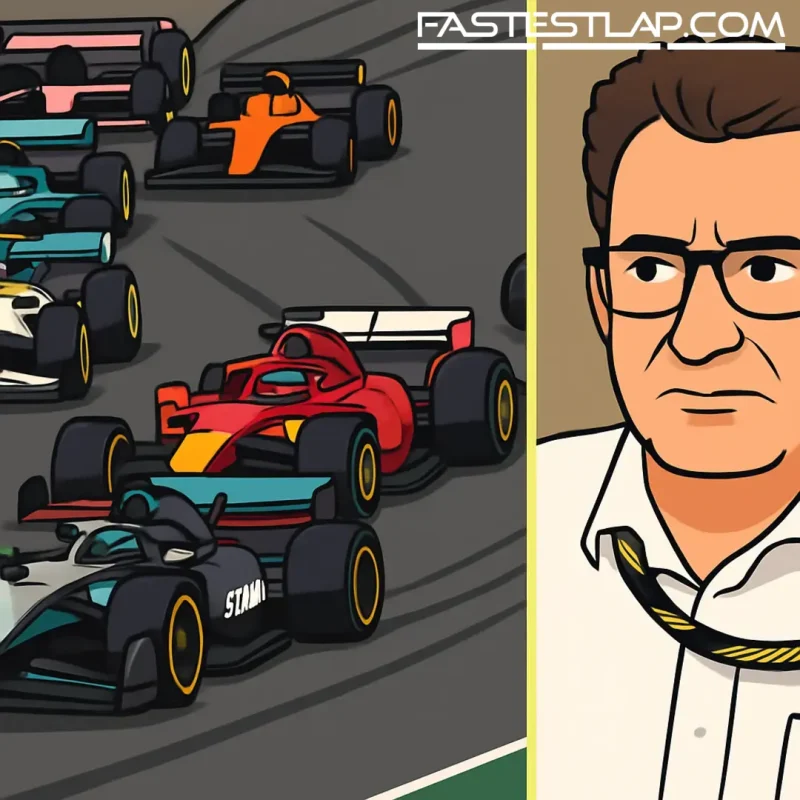FIA’s Tombazis: Variable energy caps could split the field early in 2026 — but fans won’t need an engineering degree to follow it
As F1’s next-generation power units loom for 2026, the FIA’s Nikolas Tombazis says one of the sport’s newest tools — variable energy harvesting and deployment limits — could decide who hits the ground running. And while that sounds painfully technical on paper, the governing body insists it’ll be kept simple for fans.
Here’s the crux. The 2026 engines will swing closer to a 50/50 split between combustion and electric power: roughly 400kW from the ICE and up to 350kW from the hybrid system. That’s a lot of electric muscle — and it brings a catch. At certain tracks, especially low-braking venues like Monza or Jeddah, there simply isn’t enough braking to harvest all the energy you’d ideally want. The fear was “unnatural” driving, think lifting on straights to recharge. No one wants that.
So the FIA has hard limits baked into the rules to keep things, as Tombazis puts it, natural. The default cap is 8.5MJ of ERS-K energy harvesting per lap. If a circuit won’t realistically allow that much under braking and partial load, the cap drops to 8MJ. In extreme cases, the limit can go as low as 5MJ for Sprint Qualifying and Qualifying — a safety valve to prevent drivers from resorting to awkward tricks just to fill the battery.
That cap won’t be the same every weekend, which is where the performance intrigue begins. Manufacturers will have to optimise how and when they harvest and spend energy at each cap level. Tombazis is candid: in the early weeks of 2026, some may not get the deployment maps right straight away. The upside? This is software-led performance. No redesigns, no new hardware. Expect rapid iteration and some swift learning from the timing screens — and from rivals — race by race.
Crucially, the FIA wants this to be understandable. The plan is to make the chosen cap for each event clear and “completely transparent,” rather than burying it in a PDF. Think of it like tyre compounds or DRS: a simple, visible label so the audience knows what the teams are working with.
What’s not moving is the headline balance between combustion and electric. After flirtations earlier this year with trimming electrical output, that door is shut. The internal combustion contribution is fixed; the flexibility is in how teams choose to deploy the electric part within the regulatory framework. If, down the line, real-world behaviour suggests tweaks are needed at certain tracks, the rules leave a narrow window to adjust how much power can be accessed in certain scenarios — but that’s an if, not a when.
There’s also the new manual override — F1’s 2026-era “push-to-pass.” Under normal running, ERS-K power will taper off as cars approach top speed. Hit the override and you unlock the full 350kW of electric punch for longer, giving a weapon for attack and defense on the straights. It won’t be a free-for-all. Like DRS, the override will be zone-based and tied to following another car within a set distance, and those parameters won’t be shuffled mid-weekend unless there’s a safety reason. The FIA’s simulations give them confidence they can land in the right place from the outset without the early-year tinkering we saw with DRS back in 2011.
Philosophically, the target is clear: create opportunities without turning passes into drive-bys. Tombazis wants overtakes to be earned — battles into braking zones, not motorway moments.
If you’re looking for where the early lap time is in 2026, don’t just stare at wind tunnels and dynos. Watch the control rooms. With power unit maximums largely equalised — same peak electrical power, similar battery capacities — the differentiator will be the brain, not the brawn: how cleverly teams harvest at an 8.5, 8.0 or 5.0MJ weekend; how they blend deployment from exit to apex to straight; how aggressively they burn through push-to-pass without leaving themselves exposed a lap later.
And don’t be surprised if the pecking order shuffles twice in the first month. Someone will nail the model, someone will miss, and by round three the laggards will have copied the best practice. That’s modern F1: gains come from lines of code as much as lines on a drawing board.
For 2025, the world championship rolls on as usual, but the sport’s smartest thinkers are already living one season ahead. The next era won’t just reward power. It’ll reward restraint — and the teams that know exactly when to break it.




